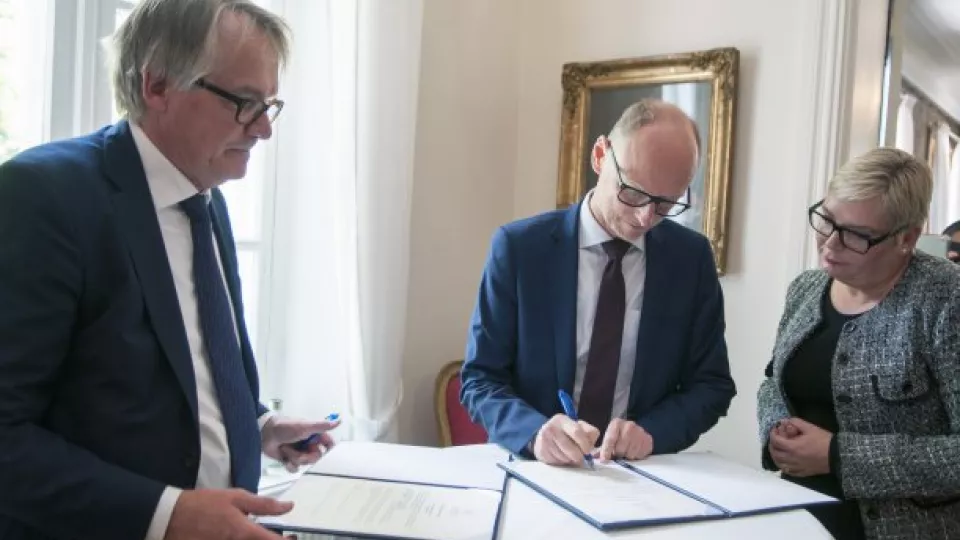The remains have been part of Lund University’s collections since the 1890s, but following a decision by the Swedish government and a thorough investigation to establish their identity, among other things, they have now been returned to their homeland.
“We are grateful to return the human remains that we have had in our collections and to be able to do it in this dignified way”, says Lund University’s Vice-Chancellor Torbjörn von Schantz.
“The repatriation of the remains of this ancestor means a great deal to all Australians”, says the Australian Ambassador to Sweden, Mr Jonathan Kenna. “The return of these ancestors to their traditional lands and communities of origin promotes healing and reconciliation. On behalf of the Australian government, I sincerely thank Lund University and the government of Sweden for their ongoing commitment to the repatriation of Australian Indigenous ancestral remains and their agreement to return this ancestor home.”
The remains that were handed over today will be sent to representatives of the Australian government’s Indigenous Repatriation Programme. The programme has been assigned by the government to repatriate remains of Aboriginals that are at institutions abroad.
The Swedish government has on several previous occasions decided to authorise the return of human remains to Australia. Remains from Lund University were previously returned to Australia in 2008.
When Lund University’s Historical Museum was assigned in 1995 to administer the University’s anatomical collection, it was discovered during an inventory count that the remains of an Aboriginal individual were missing. Many years later, in 2013, museum employees found the remains in the medical history collection administered by Kulturen in Lund. These were shown in all likelihood to be from the University’s anatomical collection and the remains missing from the inventory count of 1995. It was possible through the archives to establish that the remains were purchased from London in the 1890s.
However, no loan documentation or information about when or why the remains were transferred to the medical history collection have been found.
Lund University contacted Australia’s embassy in 2013 to inform them that the remains of another Aboriginal, a man, had been found in their collections. Since then, Lund University in cooperation with the Australian and Swedish governments has been planning the repatriation of the remains. The remains have also been thoroughly examined by Swedish and international experts to ensure that they are of an Aboriginal individual.
When the remains are now returned to Australia, the aim is that their final resting place will be where they were originally buried, or as close as possible.
The remains in the University’s collections were kept at the Department of Anatomy until 1995 when they were transferred to the Historical Museum in connection with the closure of the department. Since then the collection has been stored in the University’s depository.
The Historical Museum in Lund contains human remains from at least 1 400 individuals. Most of them arrived at the University in connection with excavations on urban reconstruction projects and are anonymous individuals from the Middle Ages. A small number of them have come into the University’s possession through earlier legislation which meant that deceased persons who were not claimed by anyone were automatically given over to research. A further number, as in this case, came to the University through exchange or purchase. The collections contain individuals from 24 countries.
In 2011, Lund University returned the remains of three Maoris to New Zealand. The remains of two Aboriginals were returned to Australia in 2008, and in 2005 the University decided to hand over the remains of a Russian Jewish man to the Jewish congregation in Malmö.
Contact:
Vice-Chancellor Torbjörn von Schantz, Lund University
rektor [at] rektor [dot] lu [dot] se (rektor[at]rektor[dot]lu[dot]se)
+46 46 222 70 01
Administrator for this matter, Gunilla Carlecrantz, Lund University
gunilla [dot] carlecrantz [at] er [dot] lu [dot] se
+46 46 222 47 90
Curator Jenny Bergman, Lund University’s Historical Museum
jenny [dot] bergman [at] luhm [dot] lu [dot] se
+46 46 222 47 18
